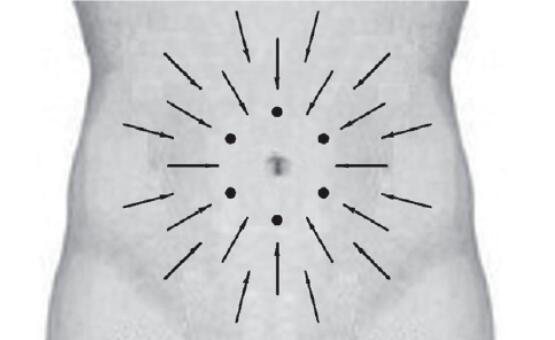
Through more than 60 years of clinical experience and research, a set of simple and easy-to-use weight loss methods with few acupoints and overall and local coordination has been summarized. The technique is exquisite, targeted at individual adjustments, combined with acupuncture to restore the balance of yin and yang, qi and blood, internal organs, and meridians, promote transportation and transformation functions, and reduce fat. Without fasting and proper diet control, acupuncture treatment is done every other day. 4 to 5 times of acupuncture treatment can actually reduce weight. If you persist for many times, the effect will be more obvious. The specific situation will be different according to the different physiques of each person.
The focus of this weight loss method is to gradually lose excess fat and weight without fasting or rebound. Weight loss does not require fast speed. While losing weight, you must also keep your body healthy, energetic, properly control your diet, and not feel hungry.
Principle of weight loss:
Strengthen the spleen and eliminate dampness, remove water, reduce mast cells, and promote self-burning of fat. Generally, obese people have enlarged cells, contain more water, and even have gas, especially fat accumulation in the abdomen, lower limbs, upper arms, and buttocks; some obese people have fat accumulation but it is hard and inelastic. Only when the local acupuncture is soft and elastic can fat be quickly reduced and the purpose of weight loss be achieved.
Acupuncture point selection:
Acupuncture weight loss is to reduce local excess fat and weight through three degrees and seven punctures plus manipulation. Through the unique acupuncture method, it vividly reflects the principle of adjustment, acupoint selection, needle insertion, needle movement, and needle retention. The whole process is smooth, hard and soft, and unique.
① Main acupoints: Yinlingquan, Sanyinjiao, Quchi, Zhongwan, Qihai.
② Needle insertion order:
Yinlingquan, the He point of the Taiyin spleen meridian of the foot (more qi and more blood), promotes water and qi, and the water and gas in mast cells are discharged through urine.
Sanyinjiao, the intersection point of the spleen, liver, and kidney meridians, strengthens the spleen and eliminates dampness, soothes the liver and regulates qi, and benefits the kidney.
Quchi, the He point of the large intestine meridian (more qi and more blood), promotes intestinal peristalsis to achieve the purpose of defecation and exhaust.
Zhongwan, the Mu point and Fu meeting point of the stomach, burns fat, eliminates fat and removes dampness.
Qihai, a Renmai acupoint, replenishes qi and satisfies the abdomen. It plays a decisive role in eliminating abdominal fat and bloating. When piercing, pay attention to using a 2-3 inch needle to pierce the ground directly.
The order of the above 5 points cannot be changed. Straight, oblique or circumferential piercing is used for the abdomen; straight piercing is used for the ribs; Yang piercing is used for thick waists and arms; plum blossom piercing is used for plump buttocks; willow piercing is used for thick legs; local weight loss is used for those with local hypertrophy and fat accumulation. Different piercing methods are used according to different parts.
Local piercing can be used for those who are afraid of acupuncture. Generally, 5-10 treatments (one course of treatment) can achieve the purpose of small abdomen, thin waist and thin buttocks.
Features of this acupuncture weight loss method
① Three degrees: The process of acupuncture should focus on the three degrees of depth, strength and angle. Specifically, the needle must penetrate the fat layer after insertion; the needle must be inserted with force, inserted directly into the ground, and the finger can feel the air and feel heavy; at the same time, different angles should be used according to the location of fat accumulation.
② Seven punctures: refers to the use of 7 puncture methods such as straight puncture, oblique puncture, surrounding puncture, raised puncture, straight puncture, willow puncture, and plum blossom puncture according to different locations.
The main acupoints are punctured directly, and the needle is inserted directly into the ground.
The abdominal needle is punctured obliquely at 45°, and the gap between the two needles is 1.5 inches apart.
The surrounding puncture is to puncture the fat plump parts such as the abdomen without any number of needles.
The raised puncture is to insert one needle directly and four or five needles to the side, which is used for fat accumulation in the shoulders, back, waist, buttocks, etc.
The straight puncture is to insert one needle directly and two or three needles to the side, which is used for the ribs, waist, neck, and lower forehead, which can shrink the waist and thin the face. The plum blossom needle is inserted directly and five or six needles to the side, which is suitable for the plump muscles of the buttocks. Five needles are inserted obliquely to the surrounding depth, and one needle is inserted directly in the center.
There is no limit to the number of willow needles, and they are mostly used in the areas with more fat on the lower part of the upper arm, the outer side of the thigh, and the calf gastrocnemius.
Technique: Use comprehensive techniques such as lifting, twisting, shaking, and pecking, and use the method of replenishing the Qi Hai (to have a full stomach effect).
Tips: Please perform the above operations under the guidance of professionals.
